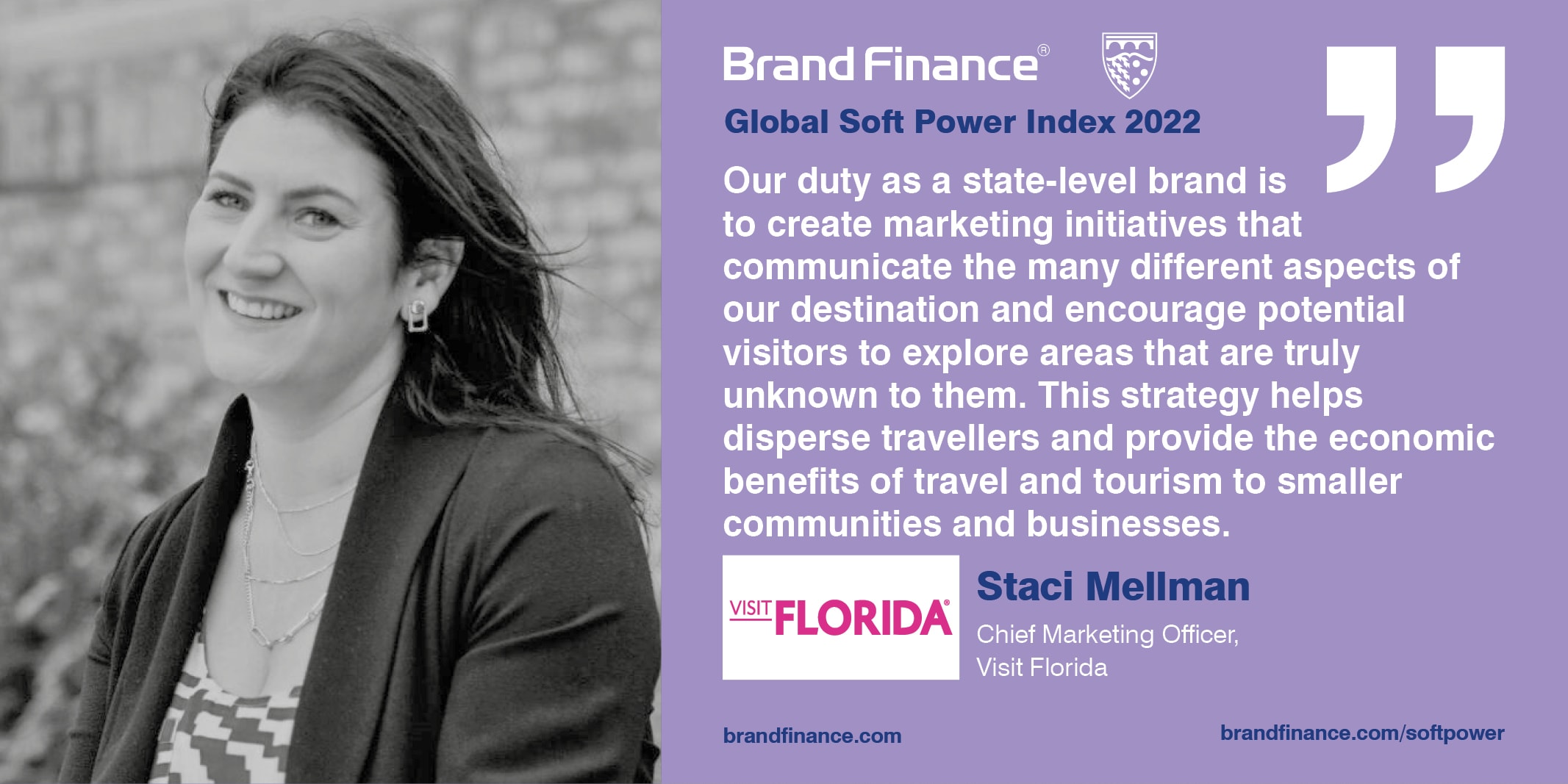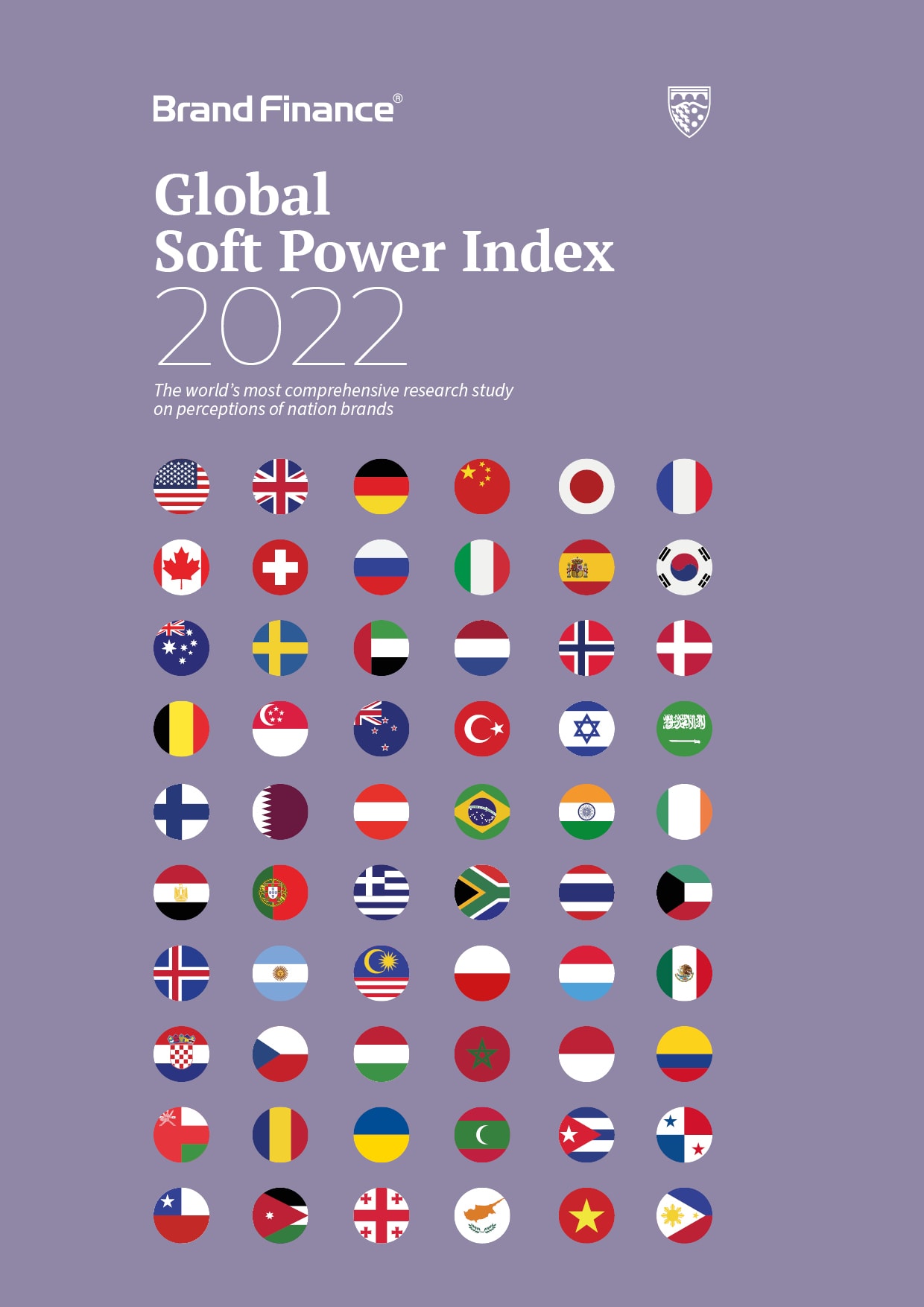This article was originally published in the Brand Finance Nation Brands 2021 report and Global Soft Power Index 2022.
When studying place brands, it’s important to also consider how place branding is rolled out at a regional and metropolitan level. This is especially pertinent in large countries with high populations and distinct regional identities.
The value of a place brand extends beyond the realm of nations. States and provinces, some working with nation-sized budgets, understand the importance of growing their brands along with their tourism economies. Florida proves the point.
This year, we worked closely with VISIT FLORIDA, the state's tourism marketing corporation, which serves as Florida's official source for travel inspiration and planning to visitors across the globe. VISIT FLORIDA is both publicly funded by the taxpayer and privately supported by partnerships with local businesses in the tourism industry.
VISIT FLORIDA functions as an unifying organization to the state’s existing tourism industry businesses. It does this by coordinating independent cooperative marketing ventures that tie together the 13,000+ tourism industry businesses statewide. What VISIT FLORIDA affects, on top of the existing tourist industry, is what we define as the ‘Place Brand Effect’.
The total value of the Florida tourism brand is a staggering US$106.0 billion. To put that into perspective, the value of the Walmart brand is US$93.2 billion. The Florida tourism brand is made up of the US$91.8 billion in value generated by all the products, services, and brands contributing to its tourism industry and the US$14.2 billion of the state’s place brand effect, which is managed by VISIT FLORIDA (see Figure 1).

The size of this effect is reflective of the sheer strength of the Florida tourism brand compared to its closest competitors, which is also reflected in the amount of tourism receipts that are accrued in the state each year (see Figure 2). We measure a place brand’s strength by benchmarking Florida against its competitors on a number of key performance attributes (see Figure 3).


A benefit of being a strong brand is that it is more resilient in times of crisis. The tourism industry was hit hard by the COVID-19 pandemic worldwide. However, as shown in Figure 2, Florida’s brand strength prepandemic helped protect the brand from serious impact. Florida maintains its position as a leader in tourism and is poised to maintain this position as travel restrictions ease and international travel is allowed again.
Interview with Staci Mellman.

Why is it essential to build a tourism brand on a state level?
Sunshine, beaches, and theme parks by themselves make for a powerful vacation story, and yet Florida tourism is much more.
Our duty as a state-level brand is to create marketing initiatives that communicate the many different aspects of our destination and encourage potential visitors to explore areas that are truly unknown to them. This strategy helps disperse travellers and provide the economic benefits of travel and tourism to smaller communities and businesses.
Tourism marketing constantly refreshes a narrative that emphasizes a location's best qualities and experiences. If a state were to cease destination marketing efforts, it would be surrendering control of its brand story to negative news cycles and uninformed generalizations.
We have been promoting Florida vacations for 25 years. The results prove that our marketing has the power to change what people think about a destination, protect a destination’s image in a crisis, support growth in the face of strong competition, and deliver economic impact to local communities.
How do you track the success of the VISIT FLORIDA brand?
Destination marketing organizations do not sell off-the-shelf commodities like coffee or mascara. We market adventures and shared experiences and memories worth repeating. VISIT FLORIDA inspires tourism, which generates more than 1 million jobs and fuels a quarter of the state economy.
To quantify our performance, we track macro-related KPIs such as overall visitation, the state’s market share of domestic and international travellers, and a variety of economic impacts (visitor contribution to Florida’s GDP, jobs supported by out-ofstate visitors, and ROI on our marketing investments). We also closely monitor the influence of VISIT FLORIDA’s marketing through such measures as incrementality of visitation, shift in destination perceptions, and intent to travel to Florida.
Now, with the help of Brand Finance, we are tracking the dollar value of the state’s tourism brand and how the work we do continually increases its value to the state of Florida.
Why did you think it was important to value the VISIT FLORIDA brand?
VISIT FLORIDA is a performance-driven company. We measure almost everything we do. With the emergence of an ISO brand valuation formula, brand equity and brand value have become critical indicators of an organization’s future earning capacity.
Destination marketing organizations such as VISIT FLORIDA typically operate as not-for-profit corporations or government agencies. Most destinations think of their brand as a framework for developing marketing messages rather than counting it as an asset. But given that Florida is one of the top vacation destinations in the world, VISIT FLORIDA believes that regularly measuring brand value provides a financial benchmark that helps us monitor our performance and compare our marketing investment to similar-strength brands.
Going forward, this metric will be critical to proving our success as stewards of an important brand within the global travel industry.



